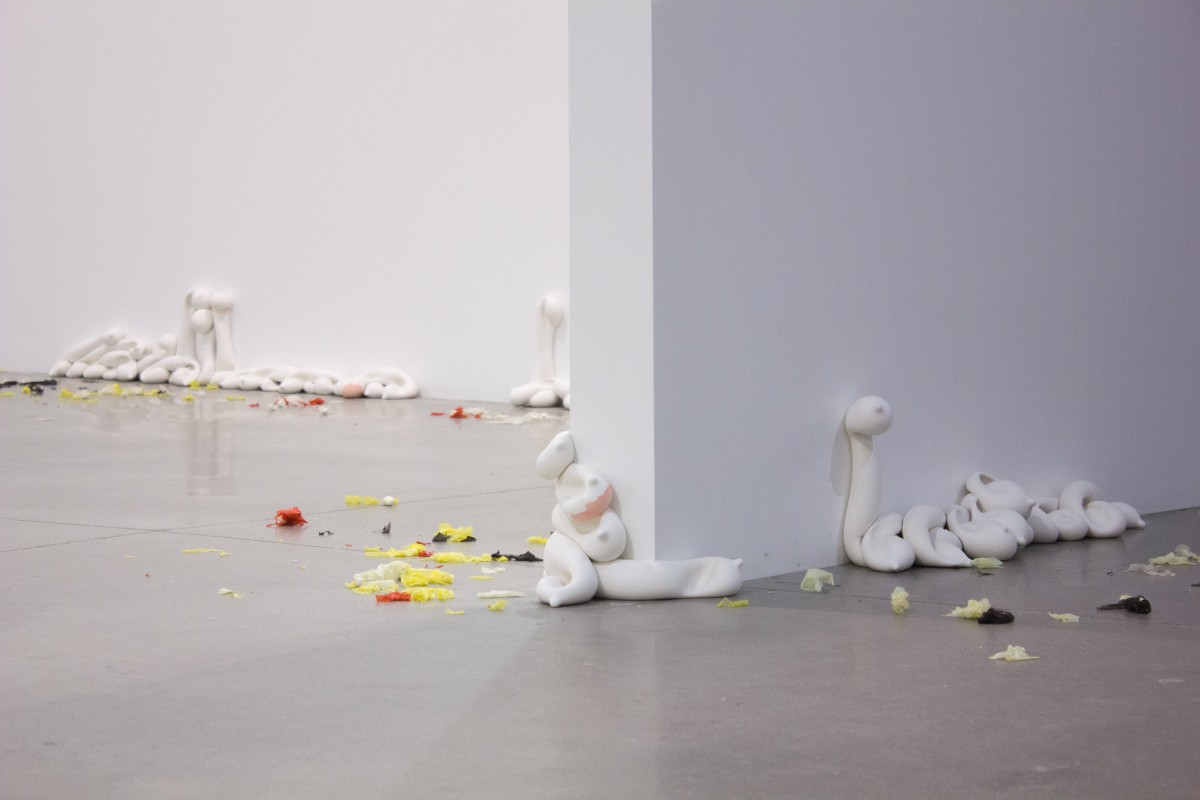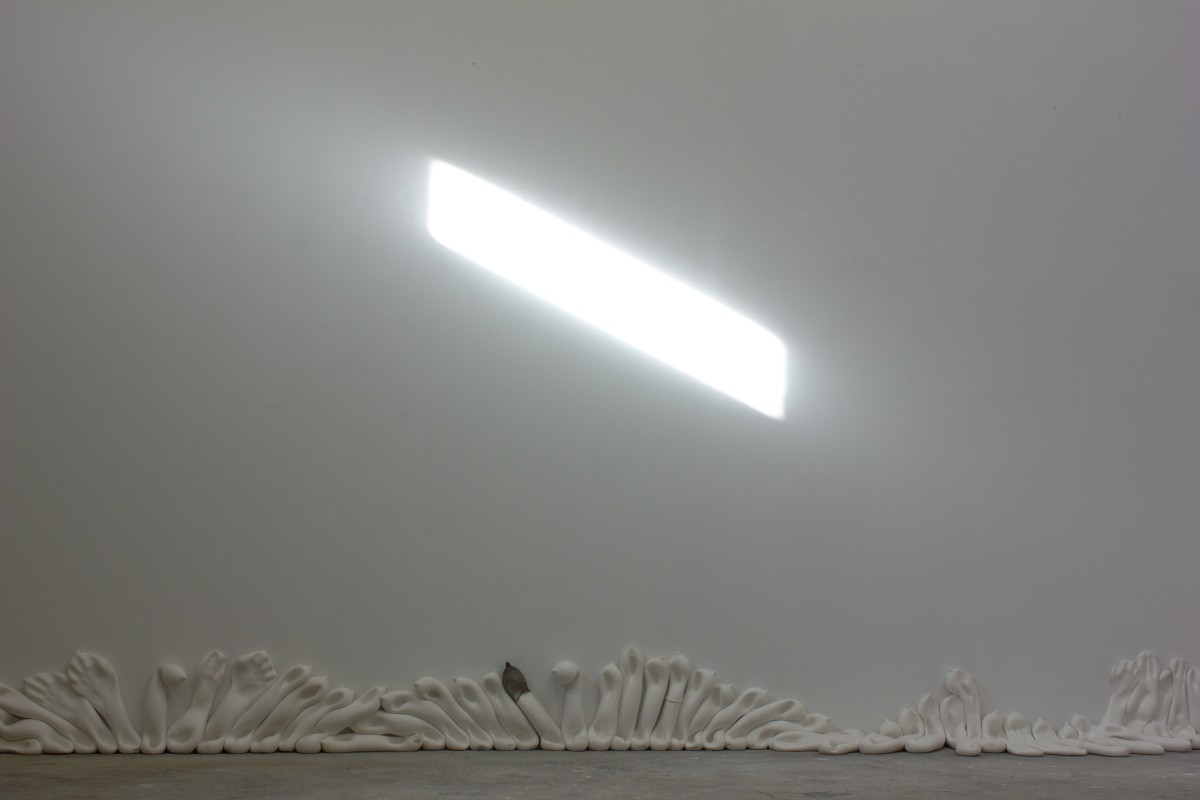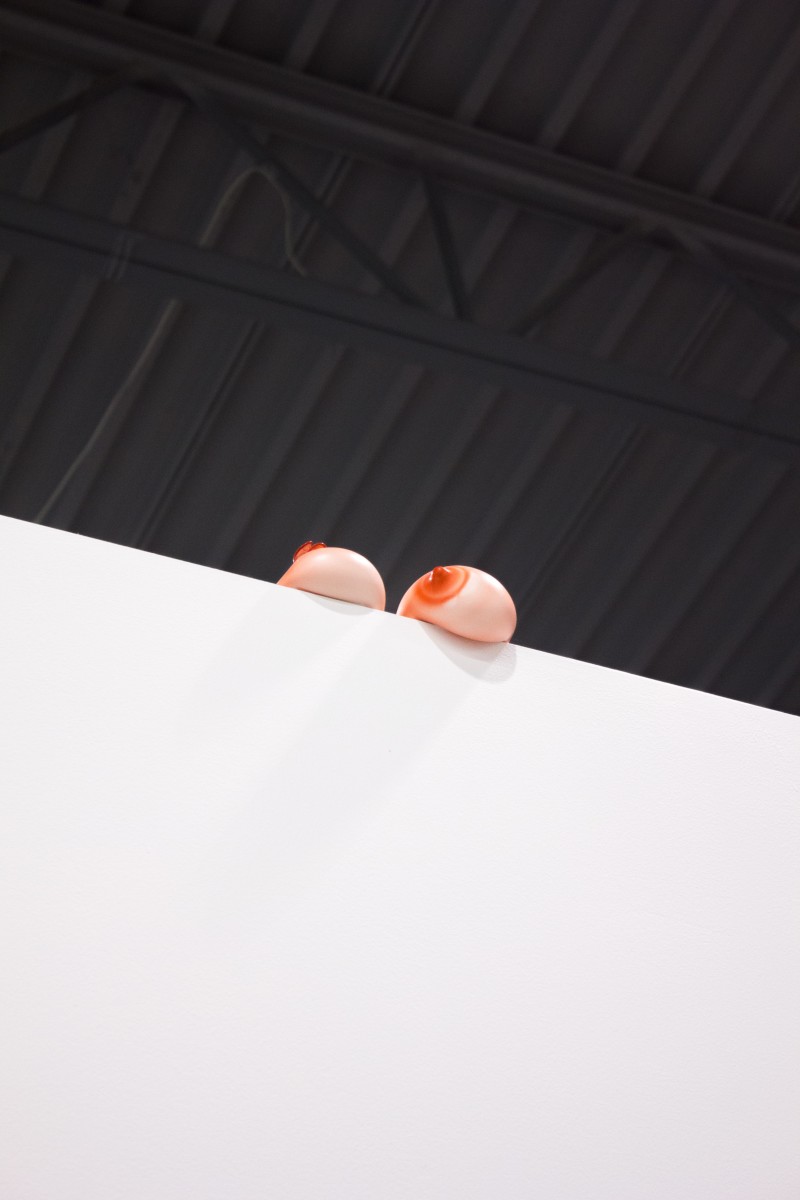Robert Anthony O’Halloran
Meet the Toronto-based artist and mould-maker known for their multi-sensory installations and sculptures.

Robert Anthony O'Halloran, Polyp #223...309 (2020). Gypsum cement, latex. Installation view at ‘Crawling out of a hidden place,’ Arsenal Contemporary (Toronto). Courtesy of the Artist.
Robert Anthony O’Halloran is a Toronto-based artist, inspired by movements in the history of Modern Art. O’Halloran describes his approach to art-making as "often thinly-veiled Auto-Obscurantism serially cast in cement and typically masochistic in style". As a technician and mould-maker at heart, her work is often process intensive, imaginatively using common casting materials to produce psycho-spatial compositions.
O’Halloran’s installations can be seen as dynamic micro-societies composed of manifold constituent parts. Their recent works explore themes of social, sexual, and ecological health; HIV/AIDS; labour and commodity; the posthumanist body; and collective need for pleasure and mirth in light of calamity. Upcoming projects include a solo presentation at The Table and text-based contributions to Phile Magazine, the internationally recognized journal for desire and curiosity.
AGO: What was the inspiration for this artwork or series?
O’Halloran: In general, my orientation toward art-making is quite Romantic. The work tends to emerge first and foremost out of a need to concretize the tumult of my felt reality and to simultaneously tickle and tantalize the social organism in which I claim membership. I am dependent upon amassing and channeling energy from within and from without, collecting sensory data and sharpening emotion to the edge of a knife. Process and play function as conduits for slippery, erratic, painful, hedonistic, and generative forces.
Polyps (2020) is an iterative body of work delineated by process, performance, and site-specificity, serially cast in situ using Hydrostone and latex condoms. When presented at Sibling (Toronto) the installation of 222 castings was accompanied by a soundscape of slapping, gurgling and squelching noises captured during its production. Typically presented at the adjunct crevices wherever the floor meets the wall, the castings are sort of putrid, sort of beautiful, obviously mingling yet certainly intangible, full of need, and writhing in lust, just like all of us.
The work first revealed itself to me as a false alarm induced hallucination whilst I was cleaning a paintbrush at the AGYU and speaking to my doctor on the phone. Panic surged, my vision blurred and I was left with the impression that the walls of the paint closet I was standing in had just combusted into a horde of convalescing slugs. I thought, Eureka. I can exorcise this.
To achieve an ideal — in this instance the theatrically sterile, sharply sculpted rectilinearity of most white cubes — walls are first framed in wood or metal, clad in sheetrock, and then coated in several fine layers of plaster, a process referred to as, mudding. A dancerly play between active material and one’s ability to manipulate it, mudding is generally most masterful when invisible. It is also a thing I do for money. Presenting as a constellation of ambiguous and gestural sex organs that have been conformed to the site, Polyps is an imposition of that ever-present process within the exhibition environment rendered Hellenistically erogenous.
In its seriality as well as in its ability to adapt, amass, and endlessly proliferate discrete and insidious forms, Polyps is rather like an orgiastic continuum of disease transmission—bubbling, boiling, bursting membranes growing in places we’d rather it didn’t but alas… life.
AGO: Tell us about a place or a space where you most love making your work?
O’Halloran: I most enjoy working situationally, using physical space as the support mechanism for the production of work in the precise location of its eventual exhibition. This is to say that whenever institutional mediation allows, I often treat the gallery space as a studio. I enjoy the variables, spontaneity, risk, and eventual resolution, if only because time eventually runs out.
With Polyps, I compose the installations mathematically in response to the planar dimensions of a given space before encouraging that stringent linearity to combust, thereby allowing the process to determine each installation’s details. I produce work often with the intention that it exists in a near-constant state of flux for as long as possible, as if it were sort of, massaged into spatial existence.
I’m constantly consumed by (and certainly most often fail in) my attempts to obfuscate built structures by concealing/perverting right angles. I desire for constructed space to have more movement, be active, messier, more human, incongruent and diverse; I see making explicit the violence of its becoming as a way to work towards that.
Robert Anthony O'Halloran, Ursula’s Garden (2020), Sibling (Toronto). Film credit: Brittany Shepherd.
AGO: Are you in dialogue with any other artists or creative peers about your practice? If so, how does this dialogue feed your work?
O’Halloran: Although I am constantly fed nutrient-rich matter through any number of orifices at any given time—at present, I am undoubtedly most influenced by my peers who organize; who care about climate justice; who do big and small things for others; who educate; who criticize, satirize, fantasize; who get in trouble and clown around; who mediate gender in diverse and gorgeous ways; who express vulnerability, anger, and communicate complex truths rigorously and sardonically.
I think it's fair to say that there is a lot to be burnt out about right now: pandemic fatigue and deadening oxytocin receptors, ongoing climate catastrophe, a quagmire of a US election and the polyvalence of far right politics, terms like “vaccine" and, “variant,” another lock-down, Winter. Although I often claim to be a proponent of the Voluntary Human Extinction Movement, at the end of the day I am grateful to be surrounded by a robust network of artists and activists who continue to rally in love for QTBIPOC, to safeguard our unhoused neighbours, and to look out for one another more generally.
Toronto is often chastised for being cold, prescriptive, and insular; although not wholly false, there is also potential here for vigour, dynamism, more risk-taking, and more love. At least, that’s what being trapped inside with nothing but body anxiety, sanitation rituals, grief, and the news to keep me company has me yearning for—in addition, of course, to world peace, clean water forever, a lasting Universal Basic Income and moistly gyrating bodies on any conceivable dancefloor. Ontario’s commitment to end DST is, I suppose, a decent start.
Follow Robert @r_a_oh


